Ehsan Raei
MIMO Radar Transmit Beampattern Shaping for Spectrally Dense Environments
Dec 13, 2021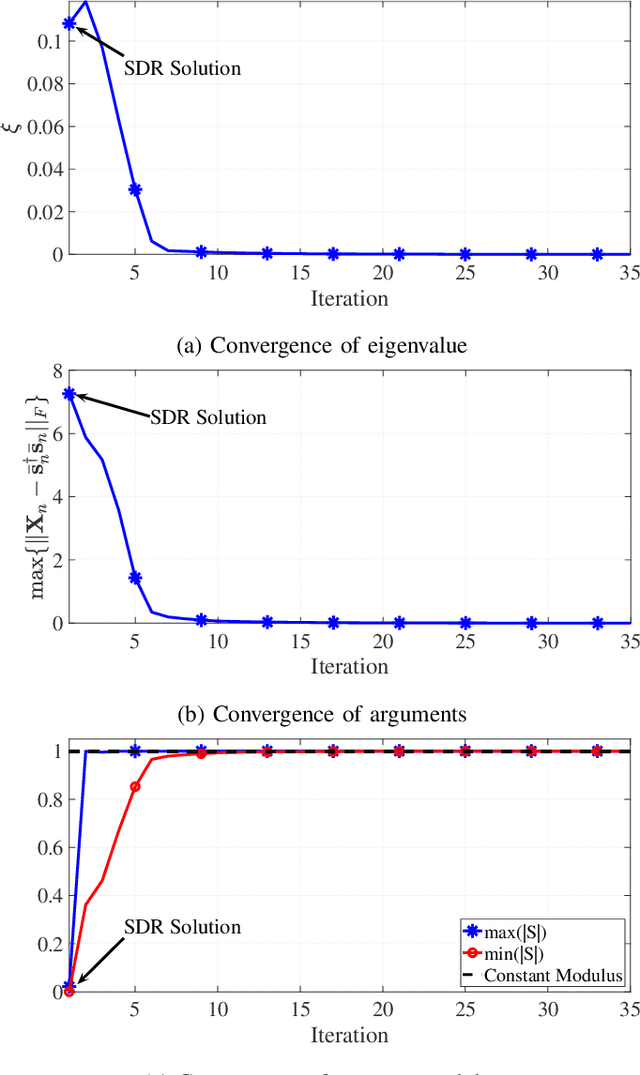

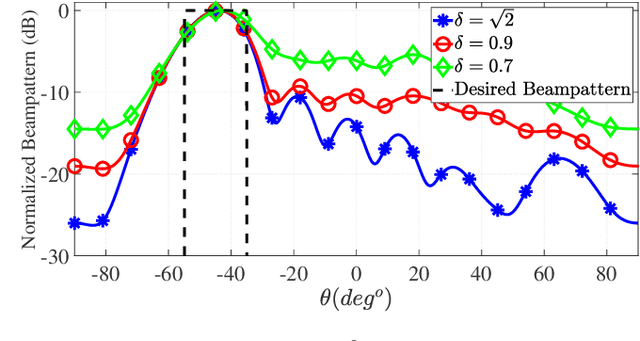

Abstract:Designing unimodular waveforms with a desired beampattern, spectral occupancy and orthogonality level is of vital importance in the next generation Multiple-Input Multiple-Output (MIMO) radar systems. Motivated by this fact, in this paper, we propose a framework for shaping the beampattern in MIMO radar systems under the constraints simultaneously ensuring unimodularity, desired spectral occupancy and orthogonality of the designed waveform. In this manner, the proposed framework is the most comprehensive approach for MIMO radar waveform design focusing on beampattern shaping. The problem formulation leads to a non-convex quadratic fractional programming. We propose an effective iterative to solve the problem, where each iteration is composed of a Semi-Definite Programming (SDP) followed by eigenvalue decomposition. Some numerical simulations are provided to illustrate the superior performance of our proposed over the state-of-the-art.
Design of MIMO Radar Waveforms based on lp-Norm Criteria
Apr 07, 2021
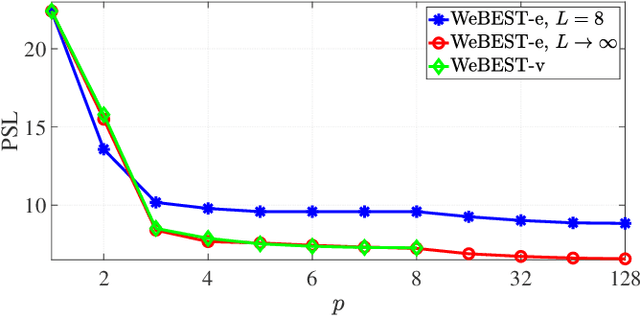


Abstract:Multiple-input multiple-output (MIMO) radars transmit a set of sequences that exhibit small cross-correlation sidelobes, to enhance sensing performance by separating them at the matched filter outputs. The waveforms also require small auto-correlation sidelobes to avoid masking of weak targets by the range sidelobes of strong targets and to mitigate deleterious effects of distributed clutter. In light of these requirements, in this paper, we design a set of phase-only (constant modulus) sequences that exhibit near-optimal properties in terms of Peak Sidelobe Level (PSL) and Integrated Sidelobe Level (ISL). At the design stage, we adopt weighted lp-norm of auto- and cross-correlation sidelobes as the objective function and minimize it for a general p value, using block successive upper bound minimization (BSUM). Considering the limitation of radar amplifiers, we design unimodular sequences which make the design problem non-convex and NP-hard. To tackle the problem, in every iteration of the BSUM algorithm, we introduce different local approximation functions and optimize them concerning a block, containing a code entry or a code vector. The numerical results show that the performance of the optimized set of sequences outperforms the state-of-the-art counterparts, in both terms of PSL values and computational time.
Spatial- and Range- ISLR Trade-off in MIMO Radar via Waveform Correlation Optimization
Mar 08, 2021



Abstract:This paper aims to design a set of transmitting waveforms in cognitive colocated Multi-Input Multi-Output (MIMO) radar systems considering the simultaneous minimization of spatial- and the range- Integrated Sidelobe Level Ratio (ISLR). The design problem is formulated as a bi-objective Pareto optimization under practical constraints on the waveforms, namely total transmit power, peak-to-average-power ratio (PAR), constant modulus, and discrete phase alphabet. A Coordinate Descent (CD) based approach is proposed, in which at every single variable update of the algorithm we obtain the solution of the uni-variable optimization problems. The novelty of the paper comes from deriving a flexible waveform design problem applicable for 4D imaging MIMO radars which is optimized directly over the different constraint sets. The simultaneous optimization leads to a trade-off between the two ISLRs and the simulation results illustrate significantly improved trade-off offered by the proposed methodologies.
Coexistence of Communications and Cognitive MIMO Radar: Waveform Design and Prototype
Mar 08, 2021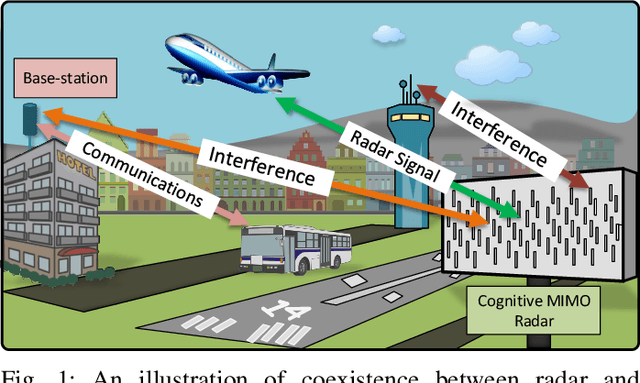

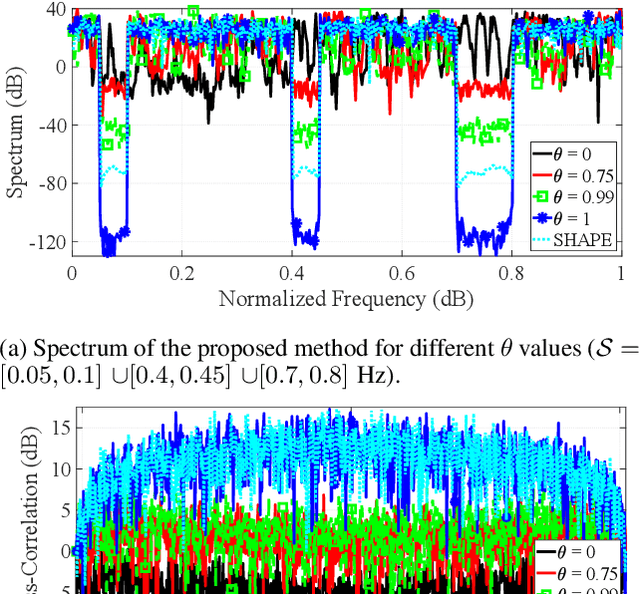

Abstract:New generation of radar systems will need to coexist with other radio frequency (RF) systems, anticipating their behavior and reacting appropriately to avoid interference. In light of this requirement, this paper designs, implements, and evaluates the performance of phase-only sequences (with constant power) for intelligent spectrum utilization using the custom built cognitive Multiple Input Multiple Output (MIMO) radar prototype. The proposed transmit waveforms avoid the frequency bands occupied by narrowband interferers or communication links, while simultaneously have a small cross-correlation among each other to enable their separability at the MIMO radar receiver. The performance of the optimized set of sequences obtained through solving a non-convex bi-objective optimization problem, is compared with the state-of-the-art counterparts, and its applicability is illustrated by the developed prototype. A realistic Long Term Evolution (LTE) downlink is used for the communications, and the real-time system implementation is validated and evaluated through the throughput calculations for communications and the detection performance measurement for the radar system.
 Add to Chrome
Add to Chrome Add to Firefox
Add to Firefox Add to Edge
Add to Edge